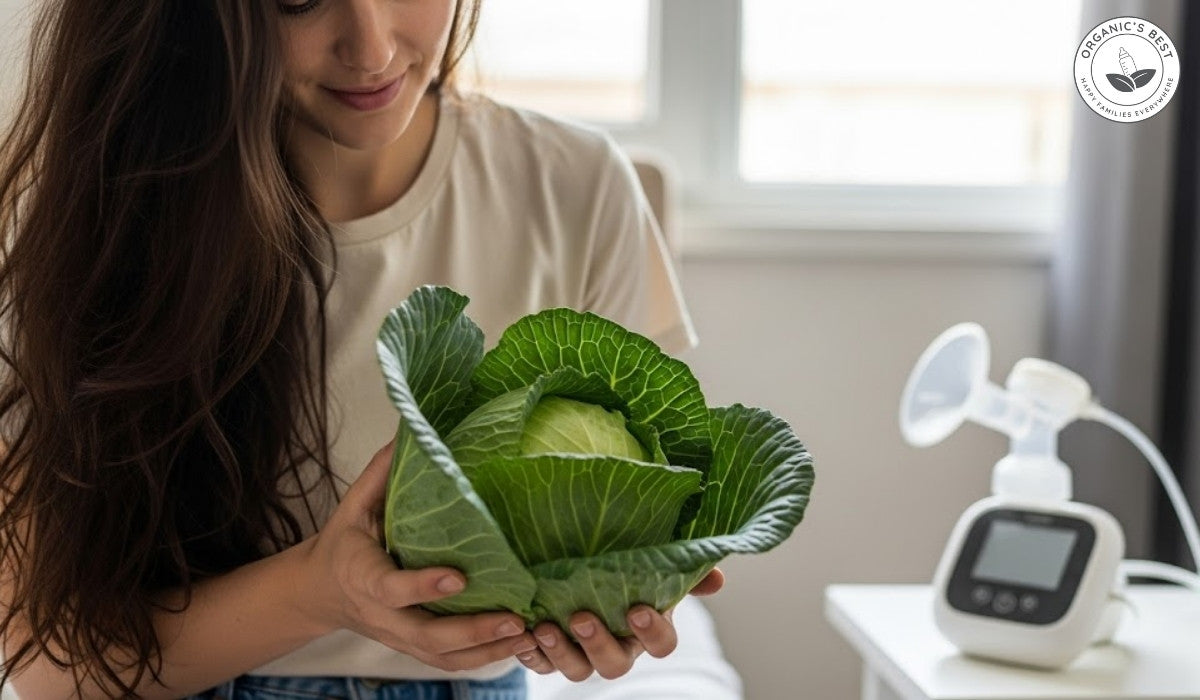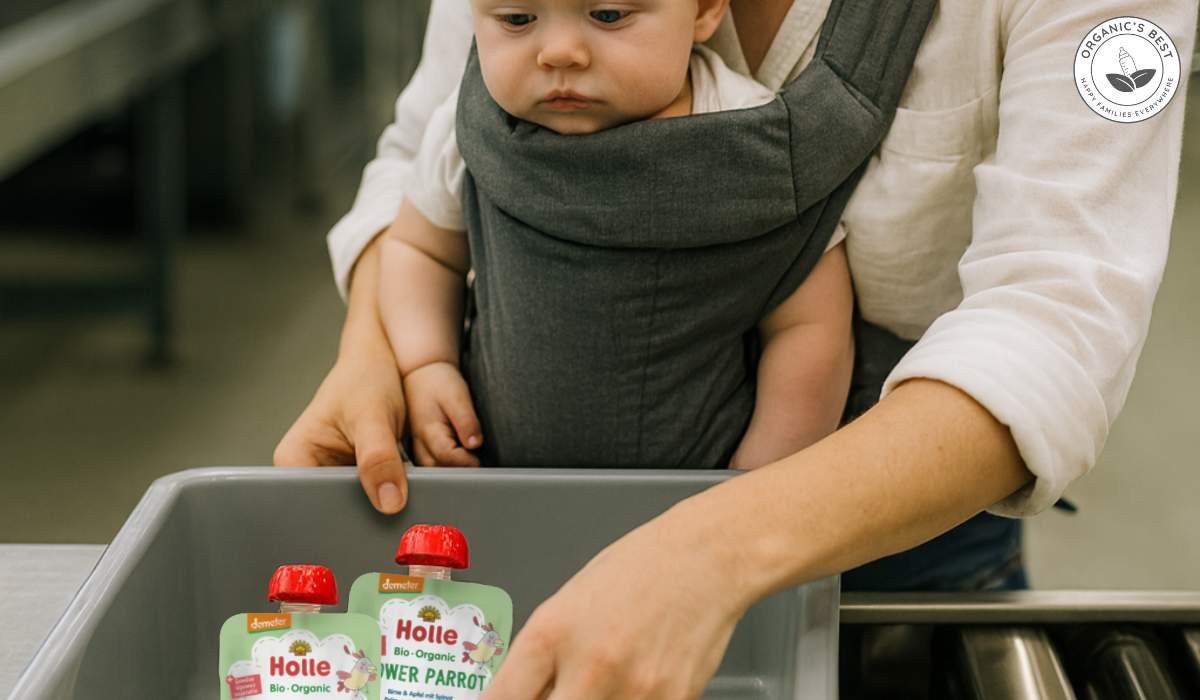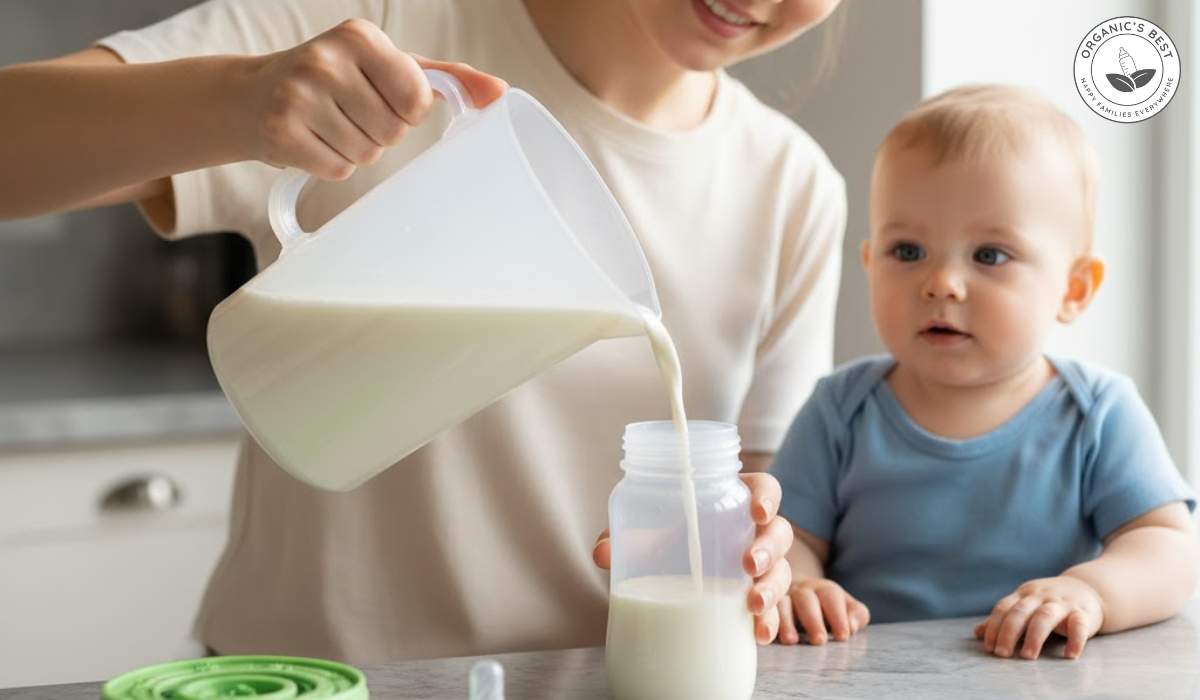Click to Get 2 FREE Boxes/Cans
Only New Customers! Click HERE to Get 2 Extra Boxes/Cans for Free With Your First Order.
BABY FORMULA
Offering new parents top-quality European infant formula from renowned brands like HiPP, Holle, Kendamil, and more. If you’re uncertain about which product to choose, our Formula Finder can help you make the best decision for your baby.
Baby Food
Offering new parents a premium selection of European baby foods, including jars, pouches, cereals, and snacks from esteemed brands like HiPP and Holle.
How to Use Cabbage Leaves for Weaning and Breast Pain
by Agustina Fernandez July 18, 2023 6 min read

Parenting is a timeless experience, and mothers throughout history have ingeniously discovered ways to nurture themselves and their children in ways that continue to be utilized today.
If you are in the postpartum period, dealing with breast pain, or need extra help with the weaning process, you're not alone, and we may have a solution for you. Keep reading to hear how cabbage leaves can be used for weaning and breast pain.
Let's explore the scientific evidence, step-by-step instructions, and crucial safety considerations surrounding this time-honoured technique!
Table of contents
Benefits of Cabbage Leaves for Breastfeeding Women
Breast pain refers to any discomfort or tenderness experienced in the breasts. While breast pain can occur for various reasons, it is pretty common during breastfeeding, a time when many women suffer from painful engorgement.
We'll discuss more reasons you may be experiencing breast pain below but remember; you have numerous home remedies, including using hot and cold compresses and cabbage leaves, at your disposal to help alleviate your discomfort!
Causes of Breast Pain During Breastfeeding

Breast Engorgement: Engorged breasts happen due to an excessive build-up of milk in the breasts, causing firm, painful and swollen breasts. Engorged breasts can occur in the early days of breastfeeding when the milk supply is establishing itself or if the breasts are not adequately drained during feeding.
Blocked Milk Ducts: Breastfeeding moms may experience blocked or clogged milk ducts, preventing the smooth flow of breast milk. This can lead to localized pain, tenderness, and a small lump in the breast.
Mastitis: Mastitis is an infection that can occur when bacteria enter the breast tissue, usually through broken skin around cracked nipples. Symptoms include breast inflammation, sore breasts, redness, and flu-like symptoms. It often requires medical attention and treatment with antibiotics.
Improper Latch or Positioning: If your baby is not latching correctly or your breastfeeding position is not optimal, it can lead to nipple soreness, discomfort, and breast pain.
Hormonal Changes: Hormonal fluctuations during breastfeeding can also contribute to breast pain. These hormonal changes can cause breast tissue to become more sensitive and tender.
So how do cabbage leaves come into play here? Well, they can be a helpful home remedy for alleviating breast pain caused by mastitis or engorgement and reducing milk supply during weaning (source)!
Using Cabbage Leaves for Breast Pain Relief

-
Choose fresh, green cabbage leaves when shopping 🛒. It's preferable to use organic cabbage if possible.
-
Wash the cabbage leaves thoroughly with clean water 💦 to remove any dirt or impurities, and gently pat the leaves dry with a clean towel.
-
Take one or two cabbage leaves and remove the hard central rib by cutting it out 🔪 or making a small V-shaped notch in the leaf.
-
Place the cabbage leaves directly on your breasts 🥬, covering the area that is experiencing pain. If your nipples are sore, cracked or bleeding, you can keep them bare.
-
Leave the cabbage leaves on your breasts for about 20 to 30 minutes ⌚, or until you feel relief.
-
After removing the cabbage leaves, wash your breasts with warm water 🚿 to remove any residue or odour from the cabbage.
How to Use Cabbage Leaves for Breast Pain
Cabbage leaf application is a fairly straightforward method that midwives and lactation consultants have suggested for decades. On top of following the step-by-step guide above, here are additional tips and tricks to consider if you want to try this technique!
Choose green organic cabbage: Select fresh green cabbage leaves for the best results. The cabbage should be firm and without any signs of wilting or discolouration. Opt for organic cabbage to minimize your exposure to pesticides and other chemicals. However, if organic cabbage is unavailable, thoroughly washing conventional cabbage can help remove surface contaminants.
Soften the leaves: If desired, soften the cabbage leaves before applying them to the breasts. Use a rolling pin or gently crush the leaves with your hands to release some of the cabbage's natural healing compounds.
Chill the cabbage leaves: Refrigerate the cabbage leaves before use. The coolness of the chilled cabbage can provide extra soothing relief when applied to the breasts.
Apply the leaves correctly: Place the cabbage leaves directly on your breasts, covering the affected area. Ensure that the leaves are comfortable and not too tight or constricting. You can cut the leaves into smaller pieces to fit the shape of your breasts if needed.
Using Cabbage Leaves to Reduce Milk Supply During Weaning

-
Follow steps 1 to 3 mentioned above to prepare the cabbage leaves 🥬.
-
Before placing the cabbage leaves on your breasts, you can use a rolling pin or your hands 🫱🫲 to gently flatten and soften the leaves to help release some of the cabbage's natural compounds that help reduce milk production.
-
Place the softened cabbage leaves directly on your breasts, covering the entire area that produces milk 🥛. Ensure that the leaves are not too tight or constricting, which can cause discomfort.
-
Leave the cabbage leaves in place for about 20 to 30 minutes ⌚. You can repeat this process several times a day, as needed.
-
After removing the cabbage leaves, wash your breasts with warm water 🚿 to remove any residue or odour from the cabbage.
It's important to note that while cabbage leaves can temporarily relieve breast pain, they should not be used as a substitute for medical advice. If the pain persists or worsens, it's advisable to consult a healthcare professional.
Furthermore, cabbage leaves are not guaranteed to reduce milk supply, and their effectiveness may vary from person to person.
The Science Behind Cabbage Leaves and Breastfeeding 👩🔬
Now that we have gone over how to use cabbage leaves, you're probably wondering how does this technique work? While some scientific studies back up these claims, using cabbage leaves is primarily based on anecdotal reports and traditional knowledge.
Cabbage contains certain compounds, such as flavonoids and glucosinolates, with anti-inflammatory and analgesic (pain relieving) properties. These compounds are believed to help reduce inflammation and relieve breast pain when applied topically.
Additionally, some anecdotal reports suggest that cabbage leaves' coolness and moisture-absorbing properties can provide a soothing effect.
Regarding reducing milk supply, cabbage leaves are thought to have a mild "drying" effect on the breasts. The pressure and coolness of the leaves may help decrease blood flow and milk production temporarily.
However, it's crucial to approach cabbage leaf treatment cautiously and consider it a complementary or supportive measure rather than a standalone solution. We advise that you consult with a healthcare professional or lactation consultant for personalized guidance and to address any underlying breastfeeding concerns.
Safety Considerations ⚠️

You may be questioning the validity of these claims and wondering if any risks are associated with the cabbage treatment. While this technique is mostly regarded as safe and relatively risk-free, some mild safety considerations must be addressed.
Decreased Milk Supply
If you are using cabbage leaves to relieve pain but are still in the process of breastfeeding, there is a chance that your milk supply will decrease. This can be especially troublesome if you exclusively breastfeed your child rather than supplementing with infant formula.
Read More: Best Formula for Breastfed Babies 2023 Guide
You can reduce the likeliness of this happening by removing the cabbage leaves as soon as you feel relief and minimizing how often you use this treatment.
Possible Side Effects
Some individuals may be allergic to cabbage or experience skin irritation or sensitivity. If you have a known cabbage allergy or if you notice any redness, itching, or discomfort after applying cabbage leaves, remove them immediately and discontinue use.
Infections
Please bear in mind that while cabbage leaves can provide relief for symptoms, they do not serve as a cure for infections. If you suspect you have mastitis and are experiencing symptoms such as fever, chills, or body aches, it is crucial to contact your doctor immediately for prompt medical attention.
Conclusion
Although using cabbage leaves for weaning and breast pain relief may appear unconventional, many mothers have found success with this method. If you choose to explore this home remedy, it is important to acknowledge the associated risks and adhere to recommended guidelines for optimal results. For any questions or concerns during your breastfeeding journey, we encourage you to seek support from a trusted healthcare professional or lactation consultant.
Disclaimer:
Please be aware that this information is based on general trends evidenced in mothers, it is in no way medical advice. |
Agustina Fernandez
Dr. Agustina Fernandez earned her medical degree from the prestigious Universidad Nacional de Córdoba, Argentina. With a deep-rooted passion for pediatrics, Dr. Fernandez is currently on the path to specializing in children's healthcare. Recently, she has delved into the vital field of infant nutrition. Her research interests include breastfeeding, infant formula, and baby food in little ones’ formative years. Dr. Fernandez's commitment to this area of study underscores her dedication to ensuring the health and well-being of children from their earliest days.
Leave a comment
Comments will be approved before showing up.
Also in Organic Infant Nutrition and Health Blog

Everything You Need To Know About Winter Pregnancy: Essential Tips for Moms-to-be
by Agustina Fernandez December 16, 2025 8 min read
Read More
Can You Bring Baby Food Pouches on a Plane? Essential Tips for Parents
by Agustina Fernandez December 09, 2025 7 min read
Read More
The Formula Pitcher: Is It Safe To Make A Whole Pitcher Of Baby Formula?
by Agustina Fernandez December 02, 2025 8 min read
Read More
Reviewed by Dr. Bardha Citaku, MD
-

Dr. Bardha Citaku: Medical Reviewer of Organic's Best Blog
Dr. Bardha Citaku completed her medical studies at the University of Prishtina in Kosovo, where she began her journey into the field of medicine. She has since developed a career in medical research, contributing to projects with notable organizations, including the World Health Organization (WHO).
